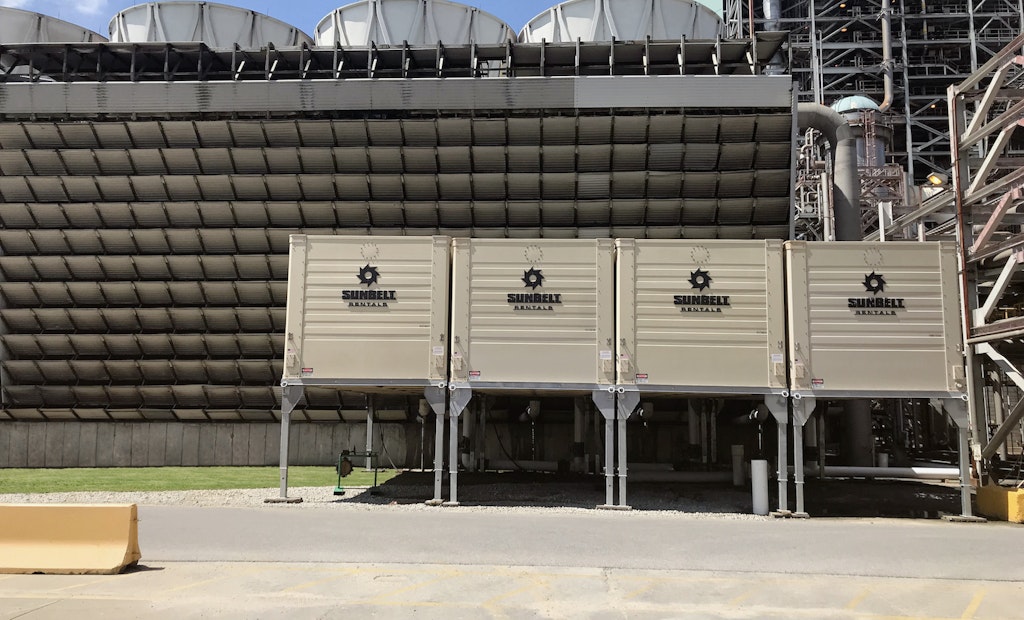Interested in Pumps?
Get Pumps articles, news and videos right in your inbox! Sign up now.
Pumps + Get AlertsWhen it comes to operational efficiency, unplanned downtime can cause even the most efficient treatment plant to come to a grinding halt. These events can cause all sorts of problems and unfortunately, they may also be impossible to avoid. But high-quality tools and equipment — coupled with a rental partner dedicated to helping you mitigate operational disruptions — can make all the difference.
Downtime is separated into two categories: planned and unplanned. Planned downtime is scheduled, dedicated time for routine maintenance on machines, equipment and more. Conversely, unplanned downtime consists of emergency or reactive work that can be triggered by factors, including:
- Equipment failure
- Operator error
- Power outages
Whether planned or unplanned, downtime shouldn’t last a minute longer than necessary. From preventive maintenance plan strategies to tips for proactively managing the environmental effects on your industrial facility, discover the key elements for reducing downtime. You’ll also learn how Sunbelt Rentals can provide fast and efficient solutions for even the most demanding maintenance projects.
Take a holistic approach with a preventive maintenance plan
Preventive maintenance — a collection of processes, guidelines and tools for conducting routine maintenance on equipment — is critical for decreasing unexpected machinery failures and ensuring an efficient workflow. This holistic approach is the opposite of reactive maintenance, which focuses on resolving a specific issue rather than carrying out regular maintenance regardless of machine condition.
Reactive maintenance is best utilized when the part or machine is inexpensive and easy to replace. The run-to-failure strategy may cost less right now, because you’re not spending money to keep equipment in condition. But eventually, you’ll spend far more money and resources than necessary. In fact, the Marshall Institute reports that you’ll pay two to five times as much as you would have if you’d performed proactive maintenance — either preventive or predictive.
Using a simple process, you can create a preventive maintenance plan to tackle this scenario
- Determine goals to reduce downtime and reactive maintenance costs.
- Take inventory of your equipment and assets.
- Study the manufacturer’s guidelines for each piece of equipment.
- List preventive maintenance tasks and frequency for each piece of equipment.
- Schedule maintenance yearly, monthly, weekly and daily.
- Work with a knowledgeable partner who can provide temporary equipment to avoid production downtime.
Preventive maintenance is the better choice for equipment where repair or replacement costs run high and parts need periodic attention. Then, maintenance can bring your equipment back to like-new condition and resolve any issues that could lead to downtime later.
The best approach? Develop a preventive maintenance plan to schedule maintenance, repair, and operations; determine tasks; assign staff; order parts; budget costs; and arrange backups to minimize downtime.
Harness the power of a predictive maintenance plan
Preventive maintenance will save you time and money compared to reactive maintenance, but it’s not the only essential element to tackling downtime at your facility. Predictive maintenance is the next critical step. Instead of simply scheduling preventive maintenance according to the original equipment manufacturer’s suggested intervals, your machines can let you know when they need attention — and you won’t have to shut them down to determine their condition.
With the following in place, you’ll know how long you have to service a key part or machine before it grinds to a halt. As a result, you won’t waste a minute of any component’s usable life.
- A basic setup to collect data
- Sensors to measure vibration, temperature, pressure, rotating speed, chemical composition, and many other parameters
- A software system to handle monitoring and analysis, so you’ll know how long you have to service a key part or machine before it grinds to a halt
Consider product, speed, quality and standard changes
Every year, plants face changes in equipment and processes due to internal shifts — such as new product introductions, greater customer demand, and different quality controls — as well as external standards such as evolving regulatory requirements. This often requires modifying the plant environment and equipment needed for process cooling.
If your current capacity cannot keep up with peak demands or meet regulatory requirements, you may have to repair or replace equipment, preferably without disrupting your operation. If you need only a replacement part, you may be able to get by with your existing equipment for a few days and not lose much time. But if you need to order equipment with a delivery date weeks or even months away, you’ll want to consider renting supplemental equipment to cover the gap.
Either way, be prepared for the situation to unfold in ways you least expect. Working with a partner such as Sunbelt Rentals can help you create an emergency plan and confidently address equipment failures and other adverse situations.
Develop a contingency plan
With a contingency plan in place and a partner with temporary equipment, engineering knowledge, and expertise to ensure smooth installation, you can change a reactive response to a proactive one. To develop an effective contingency plan, start with these five steps:
- Identify situations that would put your goals at risk. Brainstorm with your employees and get creative about what could go wrong. Rank the risks in order of probability and impact to your business.
- Determine which pieces of equipment are critical to your operations. List their performance specifications, and then look for temporary equipment that could replace each one in an emergency, along with any accessories required. Install connection points for temporary equipment and power supply in your structure before they’re needed.
- Create a contingency plan for each scenario identified in Step 1, including the timeline, source for equipment, logistics for bringing it on site and installing it, and communications to make sure everyone knows what to do and when. Keep the plan for each piece of equipment with it on paper, not on a computer that could be inoperable in an emergency.
- Work with a partner who will look at your operations, help determine your requirements in an emergency, agree to a response time for delivering equipment, and outline everything you need for a seamless installation and recovery, whether it’s power generation, scaffolding, or a forklift.
- Educate your workforce. Your staff should respond to incidents with memory as embedded as the muscle memory they use for a golf swing. They’ll need training to build discipline and processes, react appropriately, and avoid making mistakes that could cost your plant and up your downtime. They’ll also need to practice the plan, so it’s as automatic as a fire drill.
Prepare for natural disasters
No part of the world is immune from a natural disaster, whether it’s a hurricane, earthquake, wildfire, flood, tornado or volcanic eruption. In such an event, your company will need help getting back online.
Here are just a few of the details you’ll want to cover before you face an emergency situation.
- Temporary equipment location: Identify locations to position equipment, ensuring it won’t impede normal traffic. Determine how much electrical cable, chilled water hose, and/or flex duct you’ll need.
- Electrical connection: Establish the location of temporary electrical connections and how they’ll be made.
- System connection: Determine how and where connections are made. Choose a location that’s easily accessible and requires the least amount of temporary installation material.
- Power availability: Document the available voltages and amperages in case a transformer or generator is needed. Even if power has not been affected, some temporary units may require more power than existing units.
Making sure your contingency plan covers all the details is the key to saving every spare minute in natural disaster situations. A rental partner such as Sunbelt Rentals can save you days or weeks by working through every scenario and every possible need at your specific site.
The bottom line? Planning and communication are critical, down to the last nut and bolt.
Consult with a partner — at no cost
When you’re developing a preventive or predictive maintenance plan, responding to a change in anything from climate to regulatory rules, or fighting an emergency shutdown or natural disaster, you need a partner who’s just as invested in saving time and money as you are. Sunbelt Rentals provides high-quality equipment and accessories, engineering knowledge, and installation expertise wherever you need it, 24/7.
Contact Sunbelt Rentals to learn how we can support you with the planned and unplanned maintenance needs of your industrial plant, from planning to execution — and explore five questions to test your knowledge.






